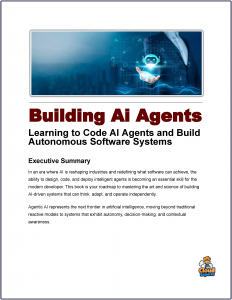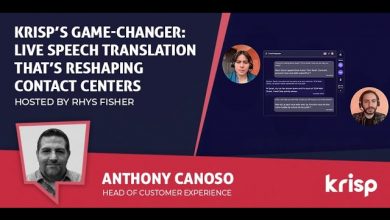Netlify: How Developers Can Build Smarter with Agent Experience (AX)
A well-designed AX ensures that interactions with AI agents feel intuitive, meaningful, and aligned with user needs, making the agent a seamless extension of the user’s workflow or daily life.
 Agent Experience (AX) in the context of developing AI agent applications refers to the comprehensive experience users have when interacting with AI agents, encompassing usability, efficiency, trust, engagement, and satisfaction.
Agent Experience (AX) in the context of developing AI agent applications refers to the comprehensive experience users have when interacting with AI agents, encompassing usability, efficiency, trust, engagement, and satisfaction.
Unlike traditional User Experience (UX), AX focuses on the unique attributes of AI agents, such as their autonomy, adaptability, proactivity, and conversational or decision-making capabilities.
It emphasizes how well an AI agent understands and responds to user intent, communicates clearly in a contextually appropriate manner, adapts to user preferences over time, builds trust through transparency and reliability, and delivers value by efficiently solving problems.
A well-designed AX ensures that interactions with AI agents feel intuitive, meaningful, and aligned with user needs, making the agent a seamless extension of the user’s workflow or daily life.
Developer Practices
To create an effective AX, developers must adopt a user-centric approach, deeply understanding the target audience’s goals, pain points, and contexts of use.
For instance, an AI agent for customer support should prioritize quick resolutions and empathetic communication, while a personal assistant might focus on personalization and proactive suggestions. Designing natural and intuitive interactions is critical, leveraging advanced natural language processing (NLP) and multimodal interfaces like text, voice, or visuals to make conversations feel human-like.
The agent’s communication should be clear, concise, and tailored to the application’s purpose, maintaining a coherent conversational flow that handles interruptions, ambiguous inputs, or follow-up questions gracefully. Personalization, driven by user data such as past interactions or preferences, further enhances the experience by making it feel bespoke and relevant.
A key aspect of AX is enabling agents to be proactive and autonomous while respecting user control. Agents should anticipate user needs, such as suggesting a calendar event based on an email or automating repetitive tasks, but they must avoid over-automation by allowing users to override or customize actions.
Trust is foundational to AX, requiring agents to be transparent about their reasoning, reliable in their performance, and ethical in their handling of data. Developers should design agents to explain decisions when appropriate, mitigate biases, and prioritize user privacy to foster confidence.
Additionally, agents must be adaptable, continuously improving through user feedback and behavioral data, recovering gracefully from errors, and adjusting to changing contexts, such as shifting from casual to formal language based on the situation.
User Engagement
Engagement and delight are equally important in AX, achieved by infusing agents with a consistent and appropriate personality, whether witty, professional, or empathetic, to make interactions enjoyable. Subtle feedback cues, like typing indicators or confirmation messages, enhance the sense of responsiveness.
Developers should approach AX iteratively, starting with low-fidelity prototypes to test core interactions, followed by usability testing with diverse user groups to identify friction points. A/B testing different conversational styles or proactive behaviors can optimize engagement, while metrics like task completion rates, response accuracy, user satisfaction, and interaction frequency provide insights into AX effectiveness.
Advanced technologies, such as transformer-based NLP models or reinforcement learning, can enhance intent recognition and dynamic performance, while integration with tools like calendars or CRMs ensures a cohesive experience.
Ethically, developers must prioritize inclusivity and accessibility, mitigating biases in training data, supporting multilingual interactions, and incorporating features like screen reader compatibility. Scalability and robustness are also critical, ensuring agents handle diverse inputs, edge cases, and low-latency requirements for real-time applications.
For example, a healthcare AI agent scheduling appointments should use empathetic language, send proactive reminders, clearly explain data privacy, and be tested with patients of varying tech-savviness to ensure intuitiveness.
Netlify
Netlify is a cloud-based platform designed to simplify the development, deployment, and management of modern web applications, particularly those built with a composable, Jamstack architecture.
It offers an intuitive, Git-based workflow that automates builds, deployments, and scaling, enabling developers to create high-performance, dynamic websites, e-commerce stores, and apps. Key features include serverless functions, edge computing, continuous deployment, deploy previews, and a data unification layer called Netlify Connect, which integrates and caches content from various sources for faster load times.
The platform supports all modern web frameworks, provides enterprise-grade security, and caters to both developers and non-technical users with tools like Netlify DB for AI-native, data-driven apps and one-click build triggers for content editors.
Netlify’s free plan suits small projects, while Pro and Enterprise plans offer advanced features like metered billing and high-performance edge with a 99.99% uptime SLA. Founded in 2014, Netlify serves millions of developers and enterprises, emphasizing speed, agility, and a seamless developer experience.



